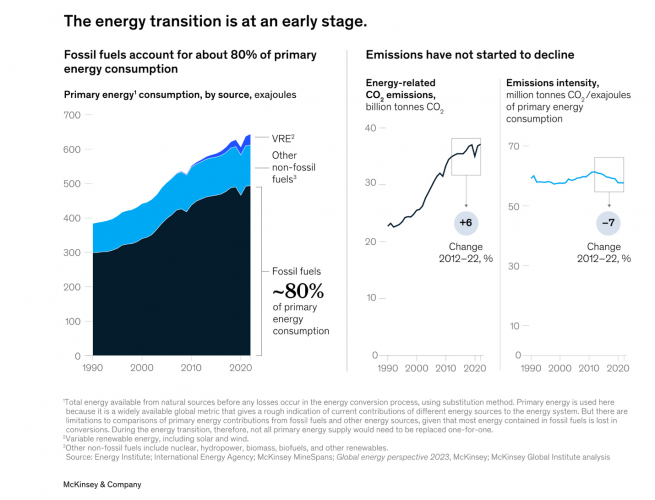Energy Transition Is Needed But Presents Many Challenges
Randy Wolken, President & CEO
The global energy transition is still in its infancy, with fossil fuels being the predominant source of energy consumption. Optimized over centuries, today’s energy system has many advantages. However, the production and consumption of energy accounts for more than 85 percent of global carbon dioxide (CO2) emissions. Even while expanding energy availability and access globally, creating a low-emissions system requires deploying millions of new assets. Many interlinked physical challenges need to be tackled to advance the transition. They involve such things as developing and deploying new low-emissions technologies and creating entirely new supply chains and infrastructure to support them.

About half of energy-related CO2 emissions reduction depends on addressing the most demanding physical challenges. Examples include managing power systems, including a large share of variable renewables, addressing range and payload challenges in electric vehicles, and finding alternative heat sources and feedstocks for industrial production.
The most demanding challenges share three features. First, some uses would require new, unproven, low-emissions technologies that deliver the same performance as high-emissions ones. Second, the complexity of the energy transition requires a systemic approach. Finally, the sheer scale of the deployment is difficult, given constraints and the lack of a proven track record.
Today’s energy system, encompassing both the production and consumption of energy resources, is massive and complex. This system has been optimized over centuries, is deeply embedded in the global economy, and serves billions of people. And it is high performing. Energy can be dispatched where and when needed because current fuels are energy-dense and easily transportable. Supply can be ramped up and down quickly.
Companies and entire countries are now engaged in an effort to transition the energy system and reduce emissions—and to do so in just a few decades. That is a big task since an energy system is a physical entity, and historical energy transitions have taken many decades or even centuries. Complicating the task of building a new low-emissions energy system is that it coincides with the need for it to continue to grow to expand availability and access to energy.
Real progress has been made, but the transition remains in its early stages. Thus far, deployment of low-emissions technologies is only at about 10 percent of the levels required by 2050 in most areas, and that has been comparatively easy compared to what lies ahead. More demanding challenges are on the horizon.
MACNY is committed to helping our members and communities move toward a greener future. We do believe it is necessary. However, it must consider the complexity of the energy infrastructure and the availability of technologies at the scale needed to succeed. To get involved with MACNY’s energy efforts, connect with me at [email protected] or Tiffany Latino-Gerlock at [email protected].